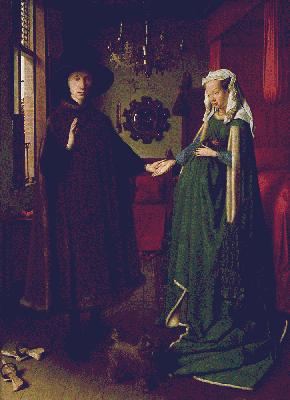4.30.25 — Finding a Forum
To pick up from last time on the future of HaberArts, you will still have my personal museum and gallery guide, my hand-made search engine, and links to pretty much anything that piques your interest. While I converted my home page to a blog in 2002, the site’s core is still the archive of fuller reviews.
 Some devote a couple of thousand words to fleshing out what an exhibition or book about art contains and what is at stake, with the corresponding blog post only a disposable excerpt. Others bring posts together as tours of the galleries, starting when anyone could tour uptown, Soho, Chelsea, later Williamsburg or Bushwick, and now the Lower East Side or Tribeca in an afternoon. I rely on them myself, to remind me of artists newly on display whom I had already forgotten. But let me tell you how this came to be.
Some devote a couple of thousand words to fleshing out what an exhibition or book about art contains and what is at stake, with the corresponding blog post only a disposable excerpt. Others bring posts together as tours of the galleries, starting when anyone could tour uptown, Soho, Chelsea, later Williamsburg or Bushwick, and now the Lower East Side or Tribeca in an afternoon. I rely on them myself, to remind me of artists newly on display whom I had already forgotten. But let me tell you how this came to be.
A native New Yorker, I returned home after college, where I had studied physics, with no prospects. A friend had introduced me to fellow students in the visual-arts program at Princeton, where everyone, it seemed, wanted to be the next Frank Stella—or to explain less than patiently why older art was always a stupid idea. I could not make head or tail of what either one was doing. And I took that as a challenge. My friend and I converted a loft into cheap, spacious, and illegal housing. The entire city lay at my feet for the first time in my life.
I also had a high-school friend who spoke of a course that he had taken at Yale. He introduced me to the Northern Renaissance and to a historian, Erwin Panofsky, whose account of it showed me what patience and insight when it comes to art really mean. I had better make sense of art, and it was an excellent time to try. Museums all had cheap hours (MoMA the entirety of Monday), where I could take just a room or two on a visit, like doing my homework but a lot more fun. There was an upside after all to a minimum wage. Galleries, of course, were always free, and there was so much to read as well.
It was a great time for philosophy and critical theory, and artists were as annoyed, confused, intimidated, and intrigued as I. Some took a class in linguistics to learn about structuralism, only to find that linguistics had long since moved on. I had to move on, too, and fast. Deconstruction and “post-analytic” philosophy were only further background to literature and art. What moved them to the foreground was my first computer, my first email account, and another novelty, social media. They gave me an outlet for thoughts that I had been gathering for twenty years.
I started by posting those thoughts in an online “forum,” where virtual and real friends seemed to take me as the resident critic, even an authority. They urged me to start a Web site of my own. For a time, you could search the Web for Jan Vermeer, for one, and find me among the top two or three hits. That ended when Yahoo gave way to Google, which gives no credit for links within a domain from one page to another, but I was not hoping for attention. It all seemed just a game. For a time, my home page was a quiz designed to teach myself coding while turning people away.
The internal links remained, though, as part of my vision for art criticism. I wanted a body of work about art and ideas, and I watched it grow. If I mention something and you want to know who that is, I had a link to read more. I meant not a monument but a resource, just as it was for me. Theory could be as helpful as any other interpretation. And a review could be not a haughty or giddy list of what do with your weekend, but what artists do with their lives, and I continue next time with what criticism can be.
Read more, now in a feature-length article on this site.